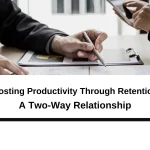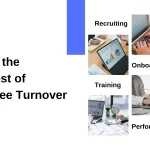
Every business leader knows that people are the heart of the company. You can have the best technology, the best office, and even the best product, but if your people keep leaving, everything else falls apart. Employee turnover is one of the biggest challenges leaders face today. It slows down progress, hurts team morale, and costs the business a lot of money.
The good news is that leaders no longer have to rely only on guesswork. With workforce analytics, companies can use data to understand what’s happening with their teams. They can see signs of trouble early and take action before employees decide to walk away. When used the right way, analytics helps leaders not only stop people from leaving but also build stronger, more engaged teams.
Workforce analytics is the practice of looking at employee data to make better decisions about people. It’s not just about counting how many employees you have. It’s about understanding their behavior, needs, performance, and risks.
There are a few key types:
Think of workforce analytics like a health check-up. Just as a doctor uses data from blood tests to see risks before illness shows up, leaders use workforce data to stop small issues from turning into turnover.
In The Goldilocks Team, the author compares a leader to the captain of a ship. The ship may be perfectly built, the route well planned, and the equipment top-class. But if the crew keeps fighting, or worse, if good crew members keep leaving, the voyage will not go smoothly. The same happens in business.
Turnover hurts in three main ways:
This is why the book calls turnover a “domino effect.” Once it starts, it often keeps happening until leaders step in with the right tools.
One of the most powerful uses of analytics is spotting who might leave before it happens. This is called predictive workforce analytics. It looks at data points such as:
When patterns like these appear, leaders can take action. For example, if analytics shows that a group of employees feel they have no career path, managers can create development plans. If it shows that one team has unusually high stress, leaders can step in to adjust workloads or offer support.
Instead of being surprised by resignations, companies get early warnings and a chance to prevent employees from leaving.
The book The Goldilocks Team explains that employees don’t leave just for money. They leave when their basic human needs at work are not met. Workforce analytics can help track these needs:
When these four needs are met, employees feel engaged, committed, and loyal. Analytics gives leaders a way to measure and improve them.
For many years, companies relied on “gut feeling” in hiring and retention. Leaders thought they could spot the right people by instinct. But as The Goldilocks Team explains, instincts are often wrong. That’s why turnover rates remain high.
Workforce analytics replaces guesswork with facts. Instead of saying, “I think my team is happy,” leaders can say, “The data shows 20% of my team feels disconnected, and here’s how I’ll fix it.” This shift from assumption to evidence changes everything.
The future of workforce planning analytics is proactive, not reactive. Leaders won’t just be surprised by resignations. They’ll use data to design stable, high-performing teams. Here’s what’s coming:
Just like the captain of a ship relies on a compass and radar, future leaders will rely on workforce analytics to keep their teams steady and moving forward.
Workforce analytics means using employee data to make better decisions. Instead of guessing why people leave, it shows clear reasons and patterns.
Workforce planning analytics helps you see what skills and roles your company will need in the future. This way, you can hire the right people at the right time.
Workforce planning is about preparing for future needs. Workforce analytics is about studying employee data today. When used together, workforce planning and analytics make sure your people and business goals match.
Predictive workforce analytics uses past and present data to predict future outcomes. For example, it can show which employees may leave soon and why.
Turnover costs a lot of money, slows down projects, and reduces team morale. Companies also lose knowledge and skills when good people leave.
Have more questions? Find answers in our FAQ!

Boosting Productivity Through Retention: A Two-Way Relationship Minal Joshi Jaeckli October 31, 2025 When leaders talk about productivity, the conversation almost always drifts toward tools,.

What Is the Real Cost of Employee Turnover? (And How to Reduce It) Minal Joshi Jaeckli October 28, 2025 Every leader knows turnover is costly,.

How Workplace Flexibility Boosts Employee Satisfaction and Reduces Turnover Minal Joshi Jaeckli October 25, 2025 Work has changed a lot in the past few years..